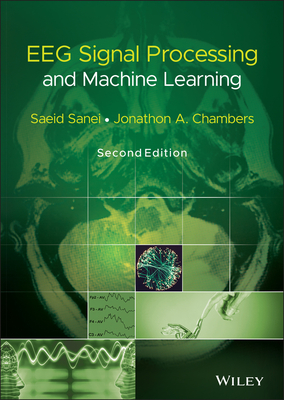買這商品的人也買了...
-
 Java 認證 SCJP 5.0 猛虎出閘
Java 認證 SCJP 5.0 猛虎出閘$650$514 -
 Embedded Linux 嵌入式系統實作演練, 2/e
Embedded Linux 嵌入式系統實作演練, 2/e$860$731 -
 鳥哥的 Linux 私房菜基礎學習篇, 2/e
鳥哥的 Linux 私房菜基礎學習篇, 2/e$780$663 -
 Microsoft SQL Server 2005 設計實務
Microsoft SQL Server 2005 設計實務$680$537 -
 ASP.NET 2.0 深度剖析範例集
ASP.NET 2.0 深度剖析範例集$650$507 -
 SQL Server 2005 SSIS 整合服務
SQL Server 2005 SSIS 整合服務$850$723 -
 Microsoft SQL Server 2005 管理實務
Microsoft SQL Server 2005 管理實務$680$537 -
 SQL 語法範例辭典
SQL 語法範例辭典$550$435 -
 Cognitive Radio Technology
Cognitive Radio Technology$1,750$1,715 -
 專案管理黑皮書
專案管理黑皮書$270$213 -
 Visual C# 2005 建構資訊系統實戰經典教本
Visual C# 2005 建構資訊系統實戰經典教本$650$507 -
 Ajax 實戰手冊 (Ajax in Action)
Ajax 實戰手冊 (Ajax in Action)$680$537 -
 時間管理─給系統管理者 (Time Management for System Administrators)
時間管理─給系統管理者 (Time Management for System Administrators)$480$379 -
 Effective C++, 3/e (中文版) (Effective C++: 55 Specific Ways to Improve Your Programs and Designs, 3/e)
Effective C++, 3/e (中文版) (Effective C++: 55 Specific Ways to Improve Your Programs and Designs, 3/e)$500$450 -
 Ajax 快速上手 (Head Rush Ajax)
Ajax 快速上手 (Head Rush Ajax)$780$616 -
 聖殿祭司的 ASP.NET 2.0 專家技術手冊─使用 C#
聖殿祭司的 ASP.NET 2.0 專家技術手冊─使用 C#$720$569 -
 聖殿祭司的 ASP.NET 2.0 專家技術手冊-使用 VB
聖殿祭司的 ASP.NET 2.0 專家技術手冊-使用 VB$720$569 -
 Visual Basic 2005 程式設計與案例剖析
Visual Basic 2005 程式設計與案例剖析$650$514 -
 Visual C++ 網路通訊程式實用案例精選
Visual C++ 網路通訊程式實用案例精選$580$458 -
 Pocket PC 裝置應用程式開發秘笈
Pocket PC 裝置應用程式開發秘笈$580$452 -
 Visual C# 2005 檔案 IO 與資料存取秘訣
Visual C# 2005 檔案 IO 與資料存取秘訣$780$616 -
 Illustrator 點子爆米花
Illustrator 點子爆米花$580$458 -
 ASP.NET 應用程式開發─與 AJAX 共舞
ASP.NET 應用程式開發─與 AJAX 共舞$620$490 -
 ASP.NET AJAX 應用剖析立即上手
ASP.NET AJAX 應用剖析立即上手$580$452 -
 軟體測試實務講座─來自矽谷的技術經驗與心得分享
軟體測試實務講座─來自矽谷的技術經驗與心得分享$290$226
商品描述
Description
An exciting new technology, described by the one who invented it
This is the first book dedicated to cognitive radio, a promising new technology that is poised to revolutionize the telecommunications industry with increased wireless flexibility. Cognitive radio technology integrates computational intelligence into software-defined radio for embedded intelligent agents that adapt to RF environments and user needs. Using this technology, users can more fully exploit the radio spectrum and services available from wireless connectivity. For example, an attempt to send a 10MB e-mail in a zone where carrier charges are high might cause a cognitive radio to alert its user and suggest waiting until getting to the office to use the LAN instead. Cognitive Radio Architecture examines an "ideal cognitive radio" that features autonomous machine learning, computer vision, and spoken or written language perception.
The author of this exciting new book is the inventor of the technology and a leader in the field. Following his step-by-step introduction, readers can start building aware/adaptive radios and then make steps towards cognitive radio. After an introduction to adaptive, aware, and cognitive radio, the author develops three major themes in three sections:
- Foundations
- Radio Competence
- User Domain Competence
The book makes the design principles of cognitive radio more accessible to students of teleinformatics, as well as to wireless communications systems developers. It therefore embraces the practice of cognitive radio as well as the theory. In particular, the publication develops a cognitive architecture that integrates disparate disciplines, including autonomous machine learning, computer vision, and language perception technologies. An accompanying CD-ROM contains the Java source code and compiled class files for applications developed in the book. In addition, for the convenience of the reader, Web resources introducing key concepts such as speech applications programmer interfaces (APIs) are included.
Although still five to ten years away from full deployment, telecommunications giants and research labs around the world are already dedicating R&D to this new technology. Telecommunications engineers as well as advanced undergraduate and graduate students can learn the promising possibilities of this innovative technology from the one who invented it.
Note: CD-ROM/DVD and other supplementary materials are not included as part of eBook file.
Table of Contents
Preface.
1. Introduction.
SECTION I: FOUNDATIONS.
2. Technical Overview.
3. Evolving from Aware and Adaptive to Cognitive Radio.
4. Autonomous Machine Learning for AACR.
5. Cognitive Radio Architecture.
6. Introduction to CRI.
SECTION II: RADIO COMPETENCE.
7. Radio Domain Use Cases.
8. Radio Knowledge.
9. Implementing Radio Domain Skills.
SECTION III: USER DOMAIN COMPETENCE.
10. User Domain Use Cases.
11. User-Domain Knowledge.
12. Implementing User Domain Skills.
13. Semantic Radio.
14. Conclusions.
Glossary.
15. References.
商品描述(中文翻譯)
**描述**
這是第一本專門探討認知無線電的書籍,這是一項有前景的新技術,預計將以更高的無線靈活性徹底改變電信產業。認知無線電技術將計算智能整合到軟體定義無線電中,為嵌入式智能代理提供適應無線電頻譜環境和用戶需求的能力。使用這項技術,用戶可以更充分地利用無線連接所提供的無線頻譜和服務。例如,在一個運營商收費高的區域嘗試發送10MB的電子郵件時,認知無線電可能會提醒用戶,建議等到到達辦公室後再使用局域網。認知無線電架構探討了一種“理想的認知無線電”,其特徵包括自主機器學習、計算機視覺和語音或書面語言感知。
這本令人興奮的新書的作者是這項技術的發明者,也是該領域的領導者。在他的逐步介紹下,讀者可以開始構建具有感知/適應能力的無線電,然後邁向認知無線電。在介紹適應性、感知性和認知無線電之後,作者在三個部分中發展了三個主要主題:
- 基礎
- 無線電能力
- 用戶領域能力
這本書使認知無線電的設計原則對電信資訊學的學生以及無線通信系統開發者更具可及性。因此,它既涵蓋了認知無線電的實踐,也涵蓋了理論。特別是,該出版物發展了一種認知架構,整合了不同的學科,包括自主機器學習、計算機視覺和語言感知技術。隨書附帶的CD-ROM包含了書中開發的應用程序的Java源代碼和編譯的類文件。此外,為了方便讀者,還包括介紹關鍵概念的網絡資源,例如語音應用程序編程介面(APIs)。
儘管距離全面部署仍有五到十年的時間,但全球的電信巨頭和研究實驗室已經開始將研發資源投入到這項新技術中。電信工程師以及高年級本科生和研究生可以從這位發明者那裡學習這項創新技術的美好前景。
**注意:** CD-ROM/DVD及其他補充材料不包含在電子書文件中。
**目錄**
前言。
1. 介紹。
**第一部分:基礎。**
2. 技術概述。
3. 從感知和適應演變到認知無線電。
4. 用於AACR的自主機器學習。
5. 認知無線電架構。
6. 認知無線電介紹。
**第二部分:無線電能力。**
7. 無線電領域用例。
8. 無線電知識。
9. 實施無線電領域技能。
**第三部分:用戶領域能力。**
10. 用戶領域用例。
11. 用戶領域知識。
12. 實施用戶領域技能。
13. 語義無線電。
14. 結論。
詞彙表。
15. 參考文獻。























